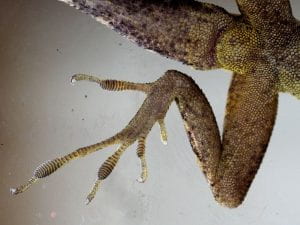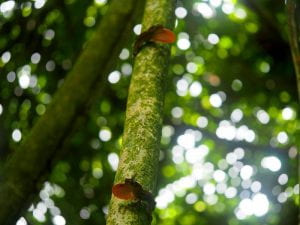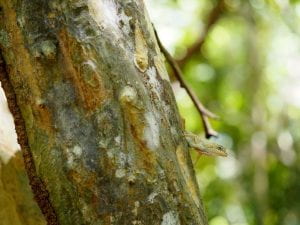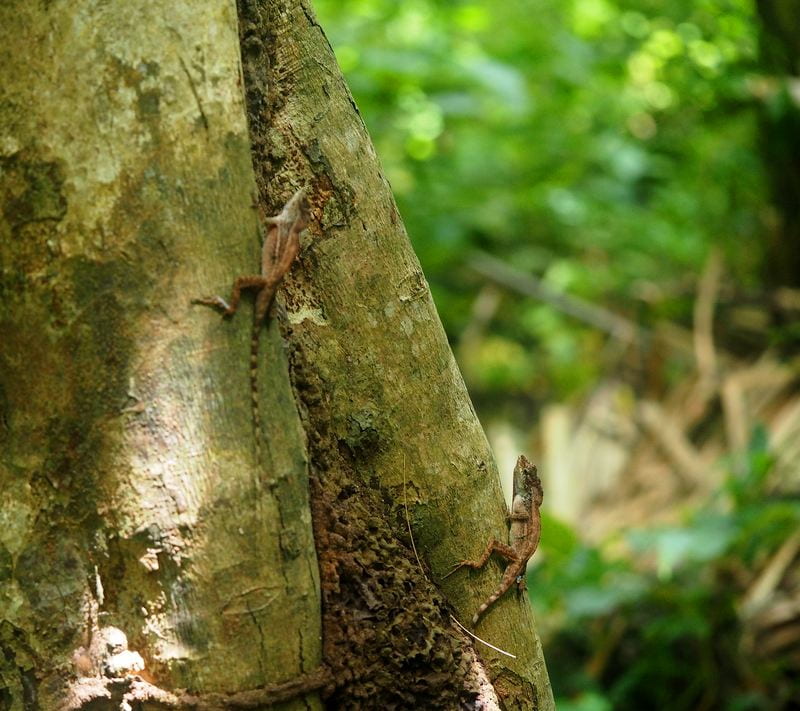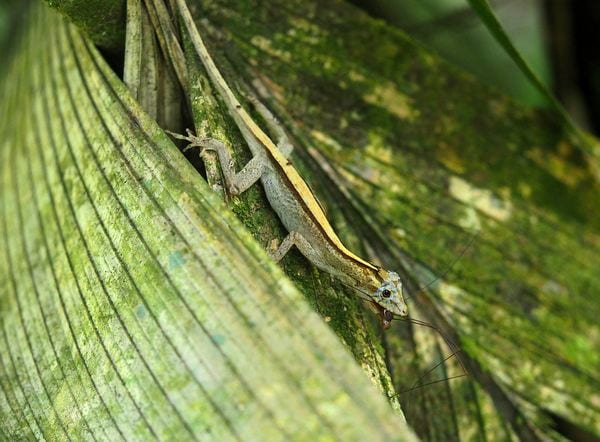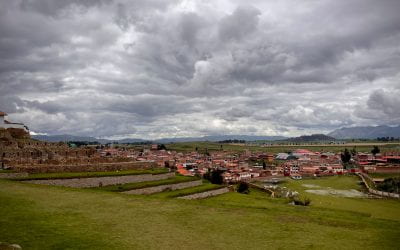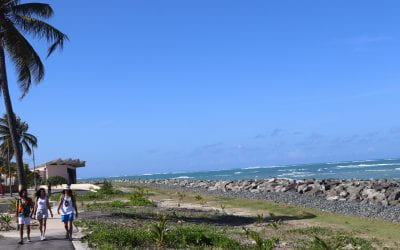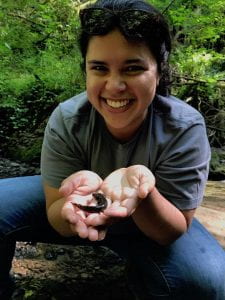
About the Author
Sofia Prado-Irwin is currently a fourth-year Ph.D. student in the Organismal and Evolutionary Biology department and a resident tutor in Currier House. She is interested in the evolution, ecology, and natural history of reptiles and amphibians. When she’s not in the field or in the office, she enjoys chasing insects through the woods, watching Jeopardy, listening to podcasts, and baking.
Linking Lizards
Exploring the process of evolution
When most of us hear the word “island,” we picture a tropical paradise with palm trees, sunshine, and white sand beaches. When I hear the word “island,” however, I think of Anolis lizards, or anoles. Anoles are a diverse group of arboreal lizards found in the Caribbean, Central and South America, and even the southern United States. They are well-known in the field of evolutionary biology for their interesting patterns of diversification in the four Greater Antillean islands—on each of these islands, they have independently evolved forms (or ecomorphs) that look and behave similarly. Take the “trunk-ground” ecomorph as an example – these lizards spend most of their time perched low on tree trunks, jumping to the ground to catch prey. They have stocky, muscular bodies and long hind limbs to help them jump and run efficiently. And each island has its own “trunk-ground” species that has evolved independently. Caribbean anoles therefore provide a fascinating example of repeated evolution by natural selection.
However, anoles are not restricted to islands – in fact, there are more species of anole present in mainland Central and South America than there are on all the Caribbean islands combined. Interestingly, the mainland species do not show the same predictable patterns of diversity seen on the islands—with a few exceptions, ecomorphs have not evolved on the mainland. Why might this be the case? As of right now, we simply don’t know. Factors such as the diversity and abundance of predators, topographic and climatic complexity, and the presence of competitors all vary between mainland and island environments, and may have contributed to different evolutionary patterns between mainland and island anoles. However, such hypotheses are difficult to test because mainland anoles simply have not been well-studied. For most mainland species, even basic information about their ecology (for example diet, habitat use, behavior) is unknown.
For my Ph.D. thesis, I hope to fill in these gaps and provide some insight to the fundamental question: how and why does the process of evolution differ between island and mainland environments? To that end, I am studying the ecology and evolutionary history of anole populations in mainland Central America and in nearby Caribbean islands. In the summer of 2017, supported by the David Rockefeller Center for Latin American Studies, I began collecting data for this project in two locations: the island of Utila in Honduras (Photo 1) and La Selva Biological Station in Costa Rica (Photo 2). I spent time in the forest observing individual lizards, documenting their behavior, and measuring their habitat use (Photos 3-5, 9-12). I also quantified the availability of habitat types, the thermal conditions of the habitats, and the population densities of several anole populations (Photos 6-7). In the lab, I measured body characteristics, photographed adaptive traits, and quantified body color and patterns (Photo 8). I also obtained tissue samples for genetic analysis, to understand how and when these populations have diverged and evolved in their different environments. I plan to use these multiple lines of evidence to understand how ecology, morphology, and genetics have changed between island and mainland populations, and therefore how ecological and evolutionary processes differ in these environments.
While my main focus that summer was collecting data for my thesis, throughout the entire trip I was also able to experience the incredible beauty and biodiversity of the neotropics. At times, the graduate school experience can be stressful and demanding. But when I find a young boa constrictor during a nighttime survey (Photo 13), see a vine snake along the path to my field site (Photo 14), or come across a charming weevil on a walk near camp (Photo 15), I’m reminded of the sheer magnitude of diversity in the tropics, and I know that I’m lucky just to witness it. The ability to conduct research in Central America is a privilege I do not take for granted, and it is one that I will truly value for the entirety of my Ph.D.
If you liked this article, click here to read related articles on The Environment, Giving and Volunteering, and Flora and Fauna!
More Student Views
Andean Cultural Landscapes in Danger: The Chinchero International Airport
English + Español
Cusco stands as one of the most culturally and ecologically captivating regions globally.
Blossoming Bonds: Beauty and Belonging in Mexico
When I heard the news about my upcoming trip to Mexico, a surge of excitement coursed through me, and I immediately felt the urge to share this exhilarating news with my close friends and family.
Weapons of Mass Construction: Building a Puerto Rico for the People
I zip up my raincoat and turn on my headlamp as we tread along a damp trail in El Yunque National Rainforest, Puerto Rico.



